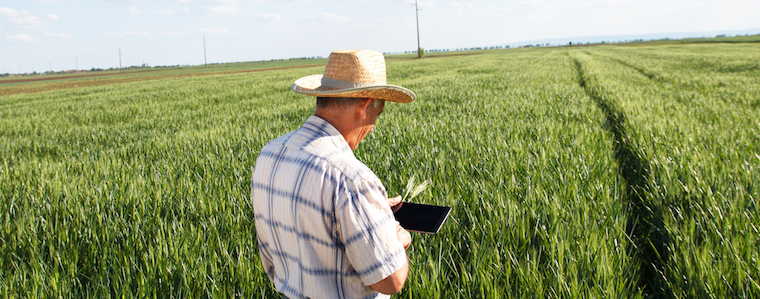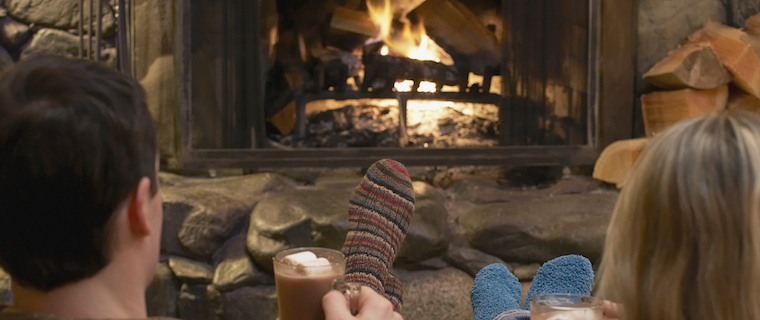Rural and small town business trends are often very different from urban business trends. So when it comes to understanding small town and rural small business trends, we turn to our favorite expert on the topic, Becky McCray, creator of Small Biz Survival, SaveYour.Town and a regular contributor to SmallBusiness.com. (Note: The trends outlined in this article will be explored more in a SaveYour.Town online broadcast on January 18, 2017. Details at the end of this article.)
This year, rural and urban business trends continue to diverge, creating much broader megatrends; redefining the meaning of distance and geography, reshaping retail business, and rethinking what kind of lives we want to live.
1 | Redefining geographic limits

Lines on a map used to define small towns. Small towns felt isolated from the world of big cities as information, communication and technology innovations were often slow in reaching beyond city suburbs.
Lines on a map mean little today. A series of developments stretching back over a century have shortened the distance between any small town and any major city in the world.
Think about all that went into getting us to this point:
- Rural postal service
- Rural electrification
- Telephone cooperatives
- Global and overnight shipping
- Internet access
- Cell phone service and mobile devices
Looking ahead, consider the innovations that are in the process of completely reshaping the cost of moving and connection people and goods:
- Advanced automation in manufacturing, processing, and transportation
- Self-driving vehicles
- Delivery drones
- 3-D printing
- Augmented and virtual reality
- Telepresence robots
Here are ways rural businesses can capitalize on such trends
RuralSourcing | Rural people are finding work as independent professionals or contingent workers, connecting them to the larger economy, often at better pay rates than strictly local jobs.
RuralOmniLocal | More local businesses are selling online and going omnichannel using their own websites, platforms like Amazon or Etsy, social channels, apps and even monthly subscription boxes to reach customers more deeply.
Innovative Business Models | Old business structures aren’t the only way to go into business anymore. Smaller, shared, temporary, and mobile businesses are all increasing. Community and cooperative ownership structures are replacing traditional ownership in challenging business cases.
2 | Customers are changing retail

During the 1970s and 80s, when downtown Main Streets were emptying out and everyone was predicting the complete eradication of independent retail, no one predicted that eventually, Chain Store Age would admit that “Mom and Pops are Cool Again.” Now, big box retailing has triggered its own scale implosion, as chains close stores, reduce square footages and try to retool to imitate that small-town downtown feeling.
The same technologies that are reducing geographic limits apply also to retail as retail splits into two main branches: The infinite and the selective.
Infinite retailers will capture the no-thought automatic re-orders for anything that doesn’t matter
Small independent retailers will shine for carefully considered selections of things where the experience matters most.
The big boxes will be caught in between and will capture less and less.

Here are ways rural businesses can capitalize on such trends
RuralOmniLocal | Small retailers are adopting technology that lets them bring the best of online information and tools directly to the real-world of stores for a mixed real and virtual experience. Think of wish lists, related product recommendations, user reviews, and expanded product information. Tie that to a knowledgeable staff and a curated selection, and you’ve got an experience that can win.
Keep your eye on Amazon | Their retail experiments with bricks and mortar, same-day delivery and instant walk-out checkout predict technology that all retailers will be adopting later.
3 | #SmallTownCool

Society is rethinking a good life and showing a new interest in our rural lifestyles. You may have to look closer, however, as some of this interest is camouflaged in such terms as “local,” “place,” and “cozy,” among others..”
Small-town travel articles are appearing in Washingtonian Magazine, TravelSmith, and even the Weather Channel. UK travelers are heading to the Deep South even before they visit big cities. The big fad for everything “hygge” (the Danish word for “cozy” that SmallBusiness.com described recently) is another disguised interest in the rural life– with its emphasis on experiences like friends coming in from a snowy hike in the woods to enjoy a fire and hot chocolate together. The focus of such “comfort marketing” are people, places and culture, not things.
Here are ways rural businesses can capitalize on such trends
Hygge | Businesses that depend on visitors are talking up their slower pace of life, conviviality, and authentic cultural experiences. You don’t even have to call it “hygge,” as long as you connect with people’s interest in simplicity, calm, and connection.
Placemaking | Small town businesses are getting involved in their communities and improving their quality of life. Arts projects, walkability, public spaces, and grassroots actions reflect a new paradigm for community involvement.
iStock
Deb Brown and Becky McCray will explore these trends in more depth and look to the next 30 years in a live broadcast on January 18, 2017. (The recording will be available on-demand throughout the year.) Learn more about the event at SaveYour.Town/Webinar-Trends.
